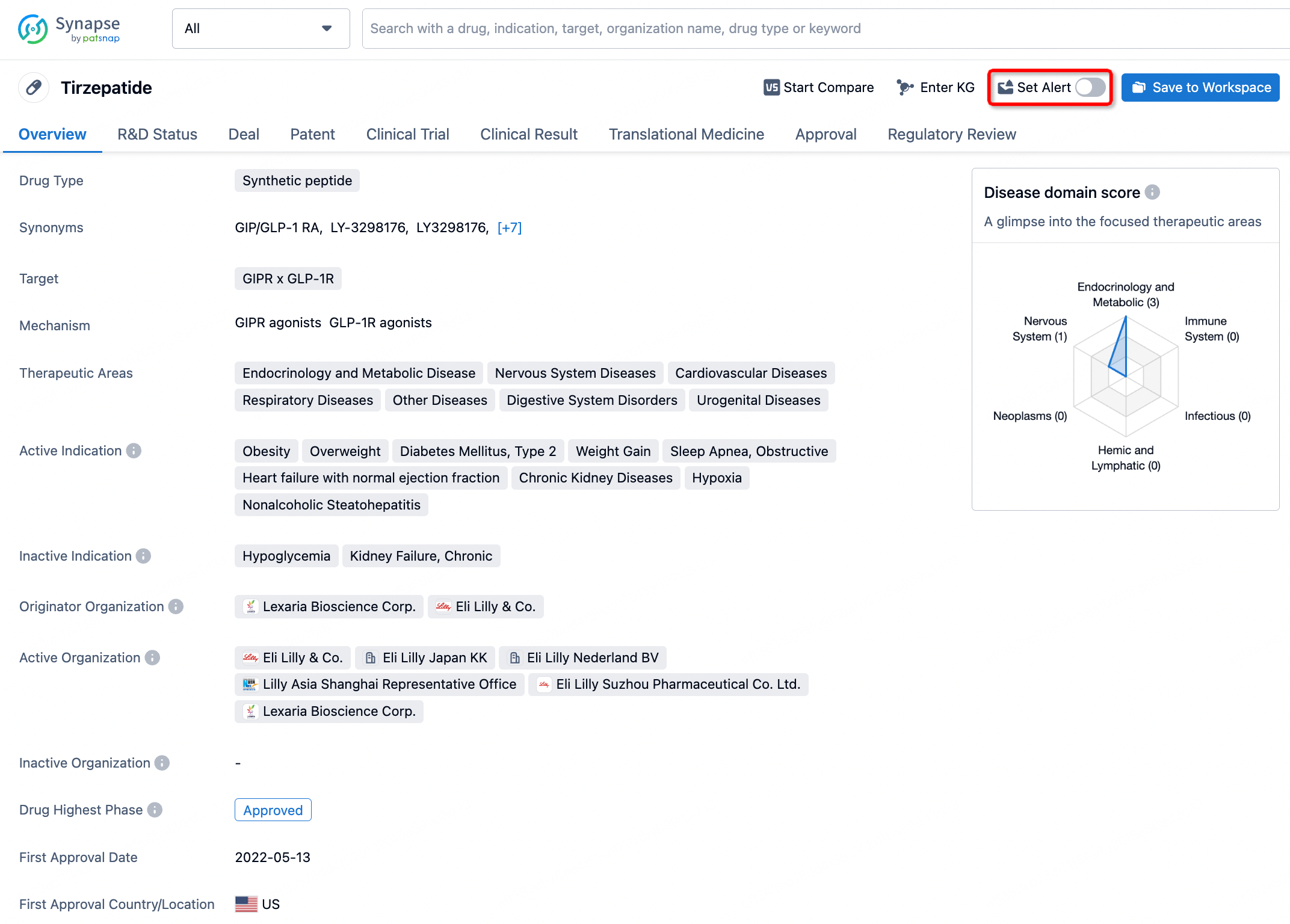Request Demo
What is the mechanism of Azelaic Acid?
17 July 2024
Azelaic acid, a naturally occurring dicarboxylic acid, is commonly found in grains such as barley, wheat, and rye. It has garnered significant attention in the dermatological field due to its versatile therapeutic properties, particularly in the treatment of acne and rosacea. Understanding the mechanism of azelaic acid can provide deeper insights into its effectiveness and potential applications.
One of the primary mechanisms of azelaic acid is its antimicrobial activity. Azelaic acid has been shown to inhibit the growth of Propionibacterium acnes, a bacterium that plays a critical role in the pathogenesis of acne. By reducing the population of this bacterium on the skin, azelaic acid helps to prevent the formation of inflammatory lesions associated with acne.
In addition to its antimicrobial properties, azelaic acid exhibits anti-inflammatory effects. It reduces the production of pro-inflammatory cytokines and reactive oxygen species (ROS), which are key contributors to the inflammatory response in acne and rosacea. By mitigating inflammation, azelaic acid not only helps in reducing the redness and swelling associated with these conditions but also promotes overall skin health.
Another significant aspect of azelaic acid's mechanism is its ability to regulate keratinization. Keratinization is the process by which keratin, a type of protein, is produced and forms the outer layer of the skin. In acne, there is often abnormal keratinization leading to the blockage of hair follicles and the formation of comedones (blackheads and whiteheads). Azelaic acid normalizes this process, thereby preventing the clogging of pores and the formation of new acne lesions.
Azelaic acid also acts as a tyrosinase inhibitor. Tyrosinase is an enzyme involved in the production of melanin, the pigment responsible for skin color. By inhibiting tyrosinase, azelaic acid can reduce hyperpigmentation and melasma, conditions often characterized by dark patches on the skin. This property makes azelaic acid a valuable agent in treating post-inflammatory hyperpigmentation, a common concern in individuals with acne.
Furthermore, azelaic acid has been found to possess comedolytic properties. It helps in the breakdown and expulsion of existing comedones, contributing to clearer skin. This comedolytic action, combined with its ability to prevent the formation of new comedones, makes azelaic acid a comprehensive treatment option for acne.
At the molecular level, azelaic acid interferes with DNA synthesis and mitochondrial enzymes in abnormal melanocytes, the cells responsible for melanin production. This interference results in a selective cytotoxic effect on hyperactive and abnormal melanocytes, leading to a reduction in hyperpigmentation without affecting normal melanocytes.
Azelaic acid is also well-tolerated by most skin types, making it suitable for long-term use. Unlike some other acne treatments that can cause significant dryness or irritation, azelaic acid is generally mild and can be incorporated into a variety of skincare routines. Its multifaceted mechanism of action and favorable safety profile contribute to its popularity as a therapeutic agent in dermatology.
In conclusion, azelaic acid's effectiveness in treating conditions like acne and rosacea can be attributed to its antimicrobial, anti-inflammatory, keratinization-regulating, tyrosinase-inhibiting, and comedolytic properties. By targeting multiple pathways involved in these skin conditions, azelaic acid offers a comprehensive and well-tolerated treatment option. Understanding its mechanism provides valuable insights into its use and potential benefits in dermatological care.
One of the primary mechanisms of azelaic acid is its antimicrobial activity. Azelaic acid has been shown to inhibit the growth of Propionibacterium acnes, a bacterium that plays a critical role in the pathogenesis of acne. By reducing the population of this bacterium on the skin, azelaic acid helps to prevent the formation of inflammatory lesions associated with acne.
In addition to its antimicrobial properties, azelaic acid exhibits anti-inflammatory effects. It reduces the production of pro-inflammatory cytokines and reactive oxygen species (ROS), which are key contributors to the inflammatory response in acne and rosacea. By mitigating inflammation, azelaic acid not only helps in reducing the redness and swelling associated with these conditions but also promotes overall skin health.
Another significant aspect of azelaic acid's mechanism is its ability to regulate keratinization. Keratinization is the process by which keratin, a type of protein, is produced and forms the outer layer of the skin. In acne, there is often abnormal keratinization leading to the blockage of hair follicles and the formation of comedones (blackheads and whiteheads). Azelaic acid normalizes this process, thereby preventing the clogging of pores and the formation of new acne lesions.
Azelaic acid also acts as a tyrosinase inhibitor. Tyrosinase is an enzyme involved in the production of melanin, the pigment responsible for skin color. By inhibiting tyrosinase, azelaic acid can reduce hyperpigmentation and melasma, conditions often characterized by dark patches on the skin. This property makes azelaic acid a valuable agent in treating post-inflammatory hyperpigmentation, a common concern in individuals with acne.
Furthermore, azelaic acid has been found to possess comedolytic properties. It helps in the breakdown and expulsion of existing comedones, contributing to clearer skin. This comedolytic action, combined with its ability to prevent the formation of new comedones, makes azelaic acid a comprehensive treatment option for acne.
At the molecular level, azelaic acid interferes with DNA synthesis and mitochondrial enzymes in abnormal melanocytes, the cells responsible for melanin production. This interference results in a selective cytotoxic effect on hyperactive and abnormal melanocytes, leading to a reduction in hyperpigmentation without affecting normal melanocytes.
Azelaic acid is also well-tolerated by most skin types, making it suitable for long-term use. Unlike some other acne treatments that can cause significant dryness or irritation, azelaic acid is generally mild and can be incorporated into a variety of skincare routines. Its multifaceted mechanism of action and favorable safety profile contribute to its popularity as a therapeutic agent in dermatology.
In conclusion, azelaic acid's effectiveness in treating conditions like acne and rosacea can be attributed to its antimicrobial, anti-inflammatory, keratinization-regulating, tyrosinase-inhibiting, and comedolytic properties. By targeting multiple pathways involved in these skin conditions, azelaic acid offers a comprehensive and well-tolerated treatment option. Understanding its mechanism provides valuable insights into its use and potential benefits in dermatological care.
How to obtain the latest development progress of all drugs?
In the Synapse database, you can stay updated on the latest research and development advances of all drugs. This service is accessible anytime and anywhere, with updates available daily or weekly. Use the "Set Alert" function to stay informed. Click on the image below to embark on a brand new journey of drug discovery!
AI Agents Built for Biopharma Breakthroughs
Accelerate discovery. Empower decisions. Transform outcomes.
Get started for free today!
Accelerate Strategic R&D decision making with Synapse, PatSnap’s AI-powered Connected Innovation Intelligence Platform Built for Life Sciences Professionals.
Start your data trial now!
Synapse data is also accessible to external entities via APIs or data packages. Empower better decisions with the latest in pharmaceutical intelligence.


